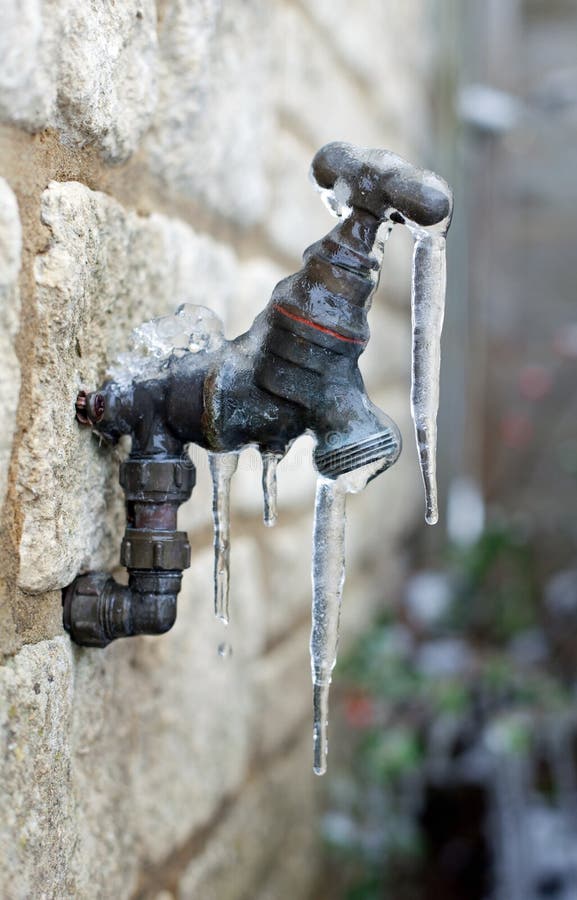Shielding Your Pipes from Cold Weather Damage: Critical Strategies
Shielding Your Pipes from Cold Weather Damage: Critical Strategies
Blog Article
We have unearthed this post involving Helpful Tips to Prevent Frozen Pipes this Winter below on the net and concluded it made sense to quickly share it with you on this site.

Winter can ruin your pipes, especially by freezing pipelines. Right here's exactly how to avoid it from happening and what to do if it does.
Intro
As temperature levels decline, the threat of frozen pipes increases, possibly causing pricey repair work and water damages. Understanding how to stop icy pipes is important for home owners in cold climates.
Prevention Tips
Protecting prone pipelines
Cover pipelines in insulation sleeves or make use of warmth tape to protect them from freezing temperatures. Focus on pipes in unheated or exterior areas of the home.
Heating techniques
Maintain indoor rooms adequately warmed, specifically locations with plumbing. Open cabinet doors to permit cozy air to distribute around pipes under sinks.
How to recognize icy pipes
Look for lowered water circulation from faucets, uncommon smells or noises from pipelines, and noticeable frost on exposed pipelines.
Long-Term Solutions
Structural adjustments
Take into consideration rerouting pipes far from exterior wall surfaces or unheated areas. Include additional insulation to attic rooms, basements, and crawl spaces.
Updating insulation
Purchase high-quality insulation for pipelines, attic rooms, and walls. Correct insulation helps preserve consistent temperatures and lowers the risk of icy pipes.
Securing Exterior Plumbing
Garden pipes and exterior faucets
Detach and drain pipes yard hoses before winter season. Set up frost-proof faucets or cover exterior faucets with insulated caps.
Understanding Frozen Pipes
What triggers pipelines to ice up?
Pipelines ice up when subjected to temperature levels listed below 32 ° F (0 ° C) for prolonged durations. As water inside the pipelines freezes, it broadens, putting pressure on the pipe walls and potentially creating them to break.
Threats and problems
Frozen pipes can lead to water supply disruptions, home damage, and pricey fixings. Burst pipes can flooding homes and trigger considerable structural damage.
Signs of Frozen Pipes
Recognizing icy pipelines early can avoid them from breaking.
What to Do If Your Pipelines Freeze
Immediate actions to take
If you think icy pipes, maintain faucets open up to eliminate pressure as the ice melts. Use a hairdryer or towels soaked in warm water to thaw pipelines slowly.
Verdict
Stopping frozen pipelines requires positive steps and fast actions. By understanding the reasons, signs, and safety nets, homeowners can secure their plumbing throughout cold weather.
6 Proven Ways to Prevent Frozen Pipes and Protect Your Home
Disconnect and Drain Garden Hoses
Before winter arrives, start by disconnecting your garden hoses and draining any remaining water. Close the shut-off valves that supply outdoor hose bibs and leave the outdoor faucet open to allow any residual water to drain. For extra protection, consider using faucet covers throughout the colder months. It’s also important to drain water from any sprinkler supply lines following the manufacturer’s directions.
Insulate Exposed Pipes
Insulating your pipes is an effective way to prevent freezing. Pipe insulation is readily available at home improvement stores and is relatively inexpensive. Pay close attention to pipes in unheated areas such as the attic, basement, crawl spaces, or garage. Apply foam insulation generously to create a buffer against the cold. You can also wrap your pipes in heat tape or thermostat-controlled heat cables for added warmth.
Seal Air Leaks
Inspect your home for any cracks or openings that could let in cold air. Seal any holes around the piping in interior or exterior walls, as well as the sill plates where your home rests on its foundation. Additionally, make sure to keep your garage door closed unless you’re entering or exiting. Leaving it open creates a significant air leak that can lead to frozen pipes.
Allow Warm Air Circulation
During cold snaps, it’s essential to allow warm air to circulate evenly throughout your home. Leave interior doors ajar to promote better airflow. Open kitchen and bathroom cabinets to help distribute heat consistently around the rooms. If you have small children or pets, be sure to remove any household chemicals or potentially harmful cleaners from open cabinets for safety.
Let Faucets Drip
A small trickle of water can make a big difference in preventing ice formation inside your pipes. When temperatures drop significantly, start a drip of water from all faucets served by exposed pipes. This continuous flow helps prevent the water from freezing. Additionally, running a few faucets slightly can relieve pressure inside the pipes, reducing the chances of a rupture if the water inside does freeze.
https://choateshvac.com/6-proven-ways-to-prevent-frozen-pipes-and-protect-your-home/

We hope you enjoyed our excerpt on How to Prevent Your Pipes From Freezing. Thanks for taking the time to read through our piece. Are you aware of anybody else who is interested by the subject? Be sure share it. Thank-you for your time spent reading it.
Explore Now Report this page